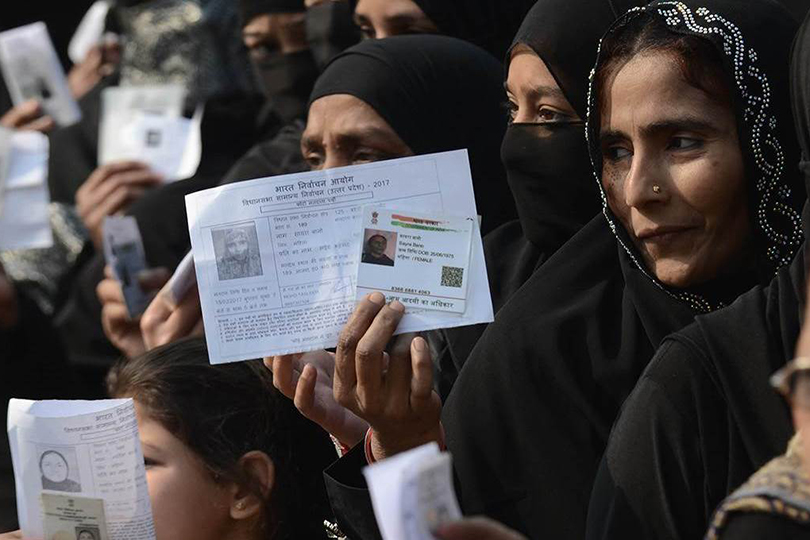Shashi Tharoor
Every Indian general election beats its predecessor’s record to become the largest in world history. This time, Indian voters must decide whether they want an inclusive country that embodies hope, or a divided one that promotes fear.
As India gears up for its general election, one must not lose sight of the sheer size of the exercise, which has been described as the “biggest humanly managed event in the world.” Starting on April 11 and ending on May 23, 900 million eligible voters (including 15 million first-time voters) will decide the fate of nearly 10,000 candidates representing over 500 political parties vying for the 545 seats in the Lok Sabha (House of the People). Every Indian general election beats its predecessor’s record to become the largest in world history. And none of the preceding 16 Lok Sabha elections has been as politically momentous as the coming one.
The election is staggered across seven phases that will take place between April 11 and May 19, with all ballots counted by May 23. Larger states such Uttar Pradesh in northern India, which sends 80 MPs to the Lok Sabha, vote in each of these phases, while others finish in a day. My own constituency of Thiruvananthapuram, the capital of the southern state of Kerala, where I am campaigning for a third term, will vote in the third (and largest) phase of the election on April 23, along with 114 other constituencies from 14 states.
The Election Commission of India (ECI), the body tasked to carry out this monumental project, will set up one million polling stations and 2.33 million ballot units. They will be manned by over 11 million staff (many of whom will be drawn from various government agencies across the country) who will travel by whatever mode of transport – from buses and trains to elephants and camels – to reach the last voter. The ECI’s own stipulation that no voter should have to travel more than two kilometers to reach a polling station can give rise to some remarkable situations. In the last election, a polling booth had to be set up in a forest in Western India to cater to one resident voter. Another was set up in the Himalayas at 4,500 meters (15,000 feet) above sea level – the highest polling booth in the world.
Despite the exuberance, expenditure, and all-encompassing nature of India’s quinquennial festival of democracy, voter participation remains a key concern. The 2014 elections recorded the highest turnout since 1952, but even this only amounted to 66.4% of the electorate. This is similar to the findings of an informal poll I conducted on Twitter: only 66% of the 15,000 respondents said that they were registered and intended to vote in the coming elections.
This is worrying. By consciously abstaining from the process, one-third of India’s voters are inadvertently abdicating their role and responsibility in deciding the country’s political destiny – and at a time when the stakes are too high to be ignored.
Over the past five years, India has borne the weight of the government’s misconceived policies and airy speechmaking. For all the lofty talk by the ruling Bharatiya Janata Party (BJP) about bringing about achhe din (good days) and a New India, prosaic reality bites: Prime Minister Narendra Modi’s administration in New Delhi has failed to address ordinary people’s real needs. Results from recent state assembly elections, where the BJP was shown the door, have made that much clear.
There is no shortage of reasons for voters’ unhappiness with the current state of affairs. Across the country, agrarian distress has been immense: suicides are at a record high,and farmers across the country have risen in protest against the government’s inept approach to solving their problems. Similarly, the revelation that the government consciously sought to bury a report showing that unemployment has reached a 45-year high has fueled widespread skepticism about official GDP growth figures. After the failure of the authorities’ demonetization scheme in 2016, followed by its poor implementation of a cumbersome five-rate Goods and Services Tax, the economy has entered a tailspin, and no amount of data chicanery would make a good case for giving the BJP another chance.
The government has entered panic mode and announced a slew of freebies – including an income support program for farmers and an increased tax exemption limit on income levels – in its last budget. But it has been too little, too late.
So now the BJP is seeking to capitalize on the recent terrorist attack by Jaish-e-Mohammed in Pulwama, which killed 40 Indian paramilitary troops and stoked tensions with Pakistan (where Jaish-e-Mohammed is based), by portraying itself as the most effective defender of India’s national security. In its unseemly effort to distract the voters from their failures in office, the party is hoping to turn the upcoming election into a khaki referendum, in which cross-border violence and national security supersede the daily terror of poverty, economic distress, and communal tension.
Indian voters must make two decisions. One is of course which candidate they want to represent them in the Lok Sabha. But voters face a more fundamental choice: Do they want an inclusive India that embodies hope, or a divided country that promotes fear?







Comments